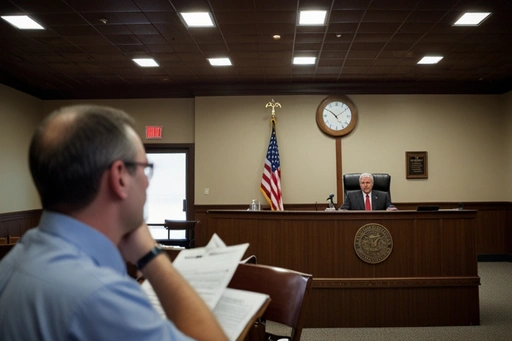
Introduction to the Indiana Buffer Zone Law Injunction
The legal world often struggles to protect protest rights and ensure public safety. The Indiana Buffer Zone Law is a notable effort to shield individuals who need essential services while upholding their constitutional rights. This law seeks to create safe spaces around healthcare facilities and has sparked much debate and legal examination, leading to an injunction that temporarily stops its enforcement.
The Indiana Buffer Zone Law injunction has put the state in the national spotlight, raising important questions about free speech boundaries and the steps needed to protect vulnerable groups. As courts consider this complex issue, the results could significantly impact not just Indiana but similar laws across the U.S. This article explores the law’s origins, challenges, and possible effects, thoroughly analyzing its legal and social implications.
What Is a Buffer Zone Law?
Buffer zone laws set a certain distance around places where specific activities, like protests, are prohibited. These zones aim to ensure public safety, minimize conflicts, and protect people from potential harassment. In Indiana, the focus is mainly on healthcare facilities, where protestors can sometimes block access.
The Origin of Indiana’s Buffer Zone Law
An injunction is a court order that forestalls a specific movement from happening. In the case of the Indiana Buffer Zone Law, it briefly blocks the law’s enforcement until a final court decision is made. Such an injunction usually suggests that the court sees substantial constitutional questions that should be addressed.
Legal Challenges to the Indiana Buffer Zone Law
Even with appropriate intentions, the Indiana Buffer Zone Law has confronted strong pushback from numerous groups. Critics claim it violates First Amendment rights, particularly the liberty of speech and assembly. Supporters argue that the regulation is critical to guard vulnerable people.
One major legal battle began when several advocacy groups filed lawsuits claiming the law infringed on constitutional rights. These lawsuits led to judicial reviews, putting the Indiana buffer zone law injunction under the legal microscope.
Key Court Cases Involving the Law
Several vital cases have influenced the discussion of the Indiana Buffer Zone Law injunction. In one key case, a group of protestors claimed that the law unfairly limited their ability to share their message. The court’s decision to issue an injunction showed the difficulty of balancing free speech with public safety.
On the other hand, healthcare advocates have provided strong evidence for the importance of the law. Testimonies from patients and staff highlighted instances of harassment, reinforcing the need for a buffer zone to ensure safety.
Implications of the Injunction
Indiana’s buffer sector regulation was born from growing issues about competitive protests in outdoor healthcare centres. Lawmakers desired to tackle the problems of obstruction, intimidation, and threats aimed at sufferers and groups of workers.
The injunction highlights the ongoing struggle between individual rights and community safety. The outcome of this case could set a standard for similar laws nationwide, shaping how courts interpret the balance between free speech and public safety.
Public Reaction to the Injunction
People are split on the Indiana Buffer Zone Law injunction. Advocacy groups and civil liberties organizations celebrate it as a free speech win. Meanwhile, healthcare providers and patient rights groups feel let down, stressing the need for protections to keep services accessible.
Social media is buzzing with opinions from both sides of the argument. This increased attention has sparked more significant conversations about how the government should manage protests and protect the vulnerable.
Legislative Responses
In light of the injunction, Indiana lawmakers are looking into possible changes to the buffer zone law. They want to tackle constitutional issues while maintaining the law’s primary goal. Some suggested changes involve adjusting the size of buffer zones and allowing exceptions for peaceful protests.
Reactions to these proposals are mixed. Some see them as a sensible fix, while others think any changes could weaken the law’s effectiveness.
Comparative Analysis with Other States
To better understand Indiana’s buffer zone law and the injunction, it helps to look at similar laws in other states. Massachusetts had a buffer zone law that the Supreme Court struck down in 2014, highlighting the need for rules that don’t overly limit free speech.
On the other hand, Colorado’s law, which features flexible buffer zones around individuals, has passed legal tests. These results show how careful lawmakers must be when creating practical and constitutionally sound laws.
The Role of Advocacy Groups
Advocacy groups have been key in shaping the conversation around the Indiana Buffer Zone Law injunction. Groups supporting reproductive rights focus on shielding patients from harassment, while free speech advocates warn against buffer zone laws’ potential overreach.
These organizations are also active in public education, legal advocacy, and grassroots efforts to sway public opinion and policy. Their work has raised the stakes in this legal fight and captured national attention.
Potential Outcomes and Future Implications
How the Indiana Buffer Zone Law injunction is resolved will significantly impact many people. If the court supports the injunction and cancels the law, it might encourage similar challenges elsewhere. Other states could follow suit if the law is returned, triggering new legal disputes.
This case also raises more significant questions about free speech, public safety, and access to healthcare. Policymakers, legal experts, and advocacy groups will have to tackle these complicated issues as they shape the future of buffer zone laws.